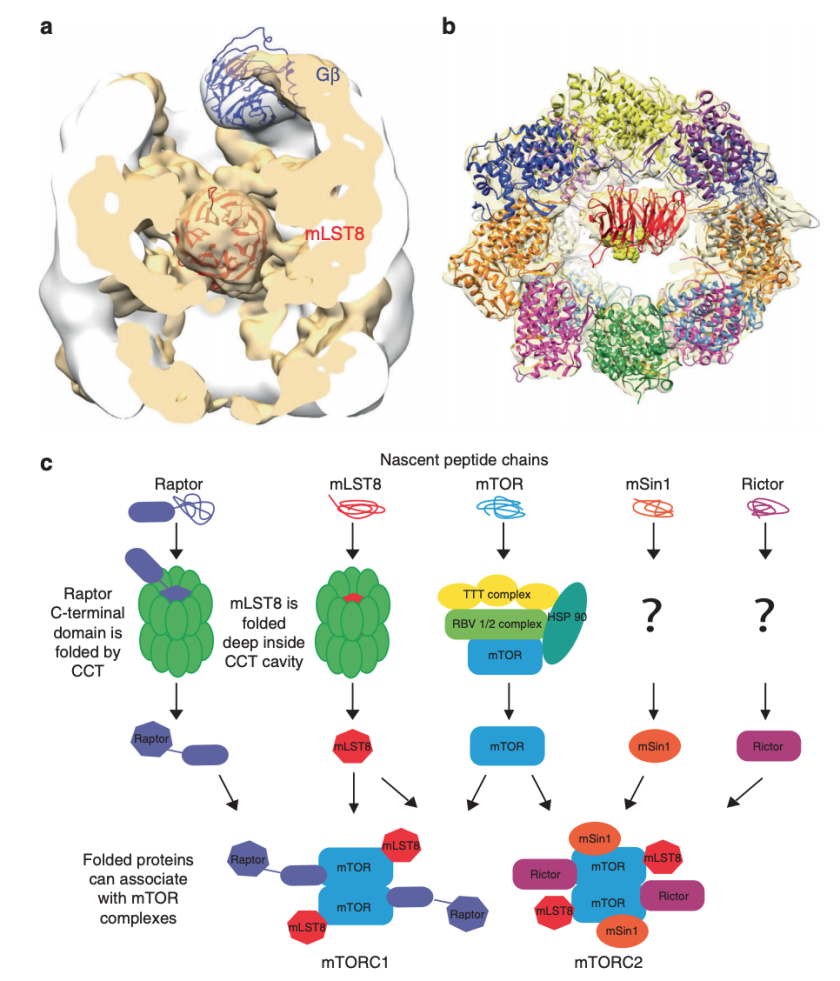
In the case of mLST8 and Raptor, both of their β-propeller domains are folded by CCT. They then release from CCT independently of PhLP1 to associate with mTOR. Cryo-EM structural studies of the Gβ-CCT and mLST8-CCT complexes, done in collaboration with the lab of Jose M. Valpuesta at the Centro National de Biotecnologia in Madrid Spain, show that the b-propellers of both proteins have reached a near-native state while bound to CCT, but they associate with CCT very differently despite their structural similarity (Fig. 1). Gβ binds the CCT apical domains at the top of the CCT folding chamber similar to actin, another CCT substrate, while mLST8 binds CCT at the bottom of the folding chamber between the CCT rings, which has not been previously seen with any CCT substrate. These positions explain the effects of PhLP1, which can interact with Gβ at the top of the chamber and mediate its release, but cannot access mLST8 between the rings. These structural studies provide the molecular details needed for structure-based therapeutic design to control the folding and thereby the function of these important CCT folding substrates.